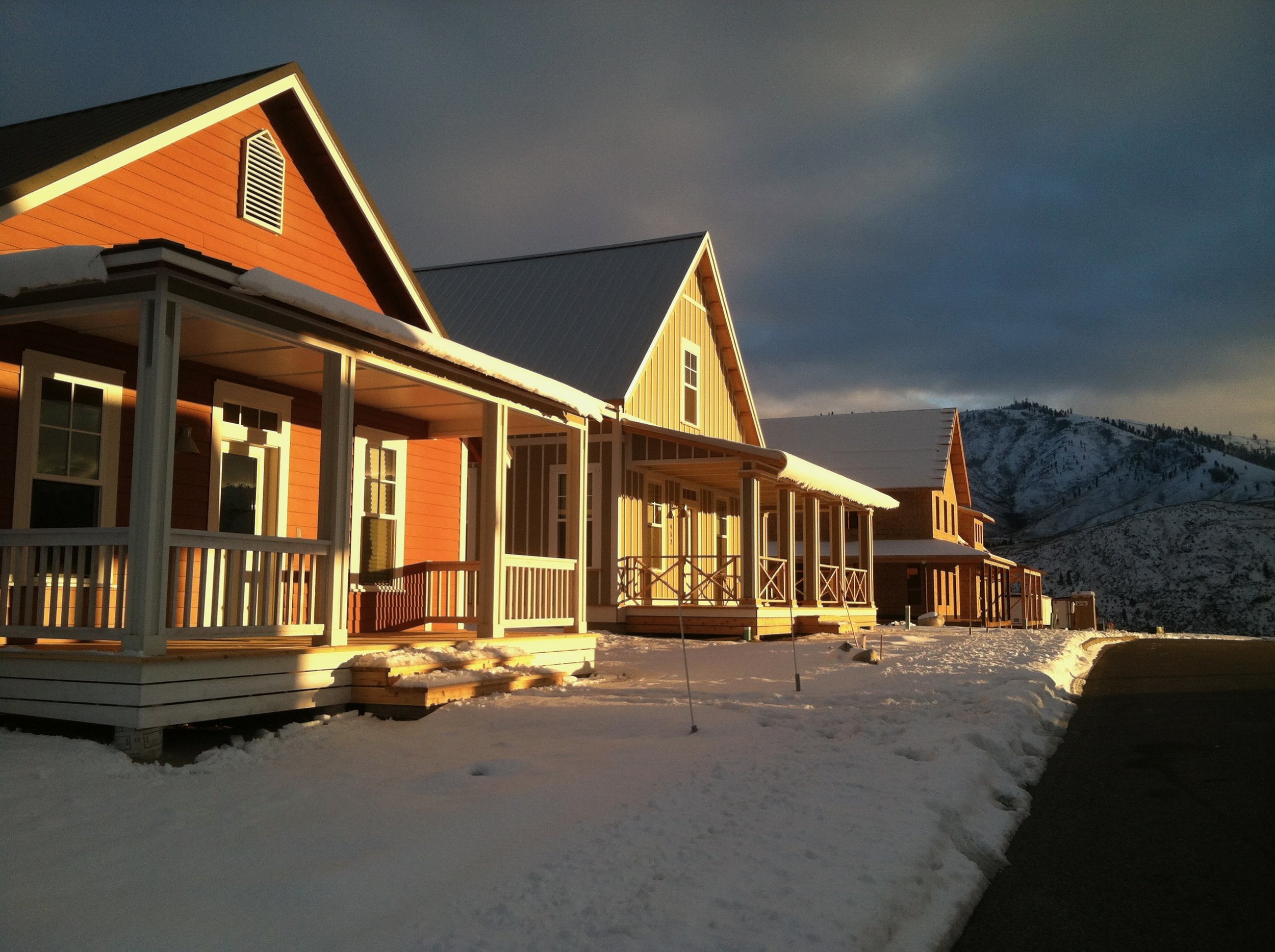The Lake Chelan Reclamation District - A History
Promise, Progress, Flumes, and Pumps
The Manson basin extends from the northern shores of Lake Chelan as a rolling patchwork of orchards, vineyards, and pastures. But where does the water come from that sustains this green tapestry? The answer carries with it a rich history.
Early orchard in the Manson basin. Circa 1930.
Early Imaginings
A quick glance at the hills surrounding Manson reveals the native vegetation: sage brush, bunch grass, and an occasional Ponderosa pine.
The Eastern Washington climate that supports such flora is – in a word – arid. But magic happens when water arrives! Gardens bloom. Fruit trees flourish.
Early pioneers understood this potential. Visions of orchards stretching across the dry sage lands filled their minds. But how could sufficient water be delivered to so many acres?
Gravity - The Only Option
Lake Chelan pioneers didn’t enjoy the extensive electric network of Chelan County PUD today. Nor was pumping technology ready for electrification. It would be many decades before pumps would be used in an irrigation capacity.
In the absence of pumps, a technology as old as civilization prevailed: gravity.
Flume winding towards the lowlands of the Manson Basin. Lake Chelan in distance.
Ditches and later flumes and pipes had been utilized for millennia to irrigate farm lands. As settlers inhabited North Central Washington in the late 1800’s, they brought with them knowledge of gravity irrigation.
By 1900, a canal carried water within the Yakima valley. And in the nearby Wenatchee valley, residents saw the completion of the Highline Canal in 1903. Visionaries in the Lake Chelan valley knew it could happen here too.
1906 - 1970’s
The story begins in 1906 when the Wapato Irrigation Company was formed and purchased 1,351 acres from the Wapato Allottee Indians. Five years later, in 1911, after the creation of miles of distribution canals, the first water was delivered to the Manson basin. That same year, the town of Manson was founded.
Route of water collection system to seven creeks up lake from Manson
Over the coming fifteen years, the system continued to expand and increase in capacity. Eventually, by 1926, it pulled water from seven creeks on the north shore of Lake Chelan –Mitchell, Gold, Poison, Little Grade, Big Grade, Falls, and Safety Harbor creek.
During this time, in 1920, the Lake Chelan Reclamation District was formed. It inherited the assets of the Wapato Irrigation Company and other preceding organizations.
As a public entity, it enjoyed favorable access to low-cost financing. This capital proved essential during construction due to the length and complexity of the flume route high above Lake Chelan.
Flume section following 1929 fire
The water was carried from the seven creeks through the flume system to Antilon Lake, the reservoir of the system. Water was then released over the growing season into a series of distribution canals and ditches to the Manson basin below.
The flumes leading from the creeks provided an efficient means of water transfer. However, they were vulnerable to an age-old summer visitor to the region: fire. Beginning in 1929 and continuing through the decades, forest fires, along with heavy spring run off, required extensive repairs to the collection system.
1970’s - Present
Given the vulnerabilities of the irrigation system to fires and heavy spring creek flows, it became clear that pumping from the lake would provide a more secure source of irrigation water.
Starting as early as 1931, the District hired engineers to consider the pumping alternative. But it wouldn’t be until 1963, when a study was approved by the Bureau of Reclamation, that the District pursued a pumping plan.
Construction began in 1969 and the new system began supplying water in 1976. Rather than miles of vulnerable flumes, a fortress-like intake station on Lake Chelan now pumped water to reservoirs located throughout the district.
Construction of Reclamation District Intake on north shore of Lake Chelan
Conclusion
Today, the Lake Chelan Reclamation District continues draw from this same north shore intake and maintains a series of tanks and pumping stations to provide water to Manson orchards and vineyards.
It now also provides potable water and sanitary sewer service in portions of its service area.
A trip to Antilon lake and beyond reveals countless lasting signs of the first flume system. The system was challenging and expensive to build, and equally as challenging to maintain. But it produced millions of apples, supported five generations of orchardists, and led to the creation of Manson community we enjoy today.
Source Materials:
LCRD Slide Show presented to Lake Chelan Rotary, 2023
“Centential Celebration - Lake Chelan Reclamation District - 1920-2020” - Lake Chelan Historical Society
















